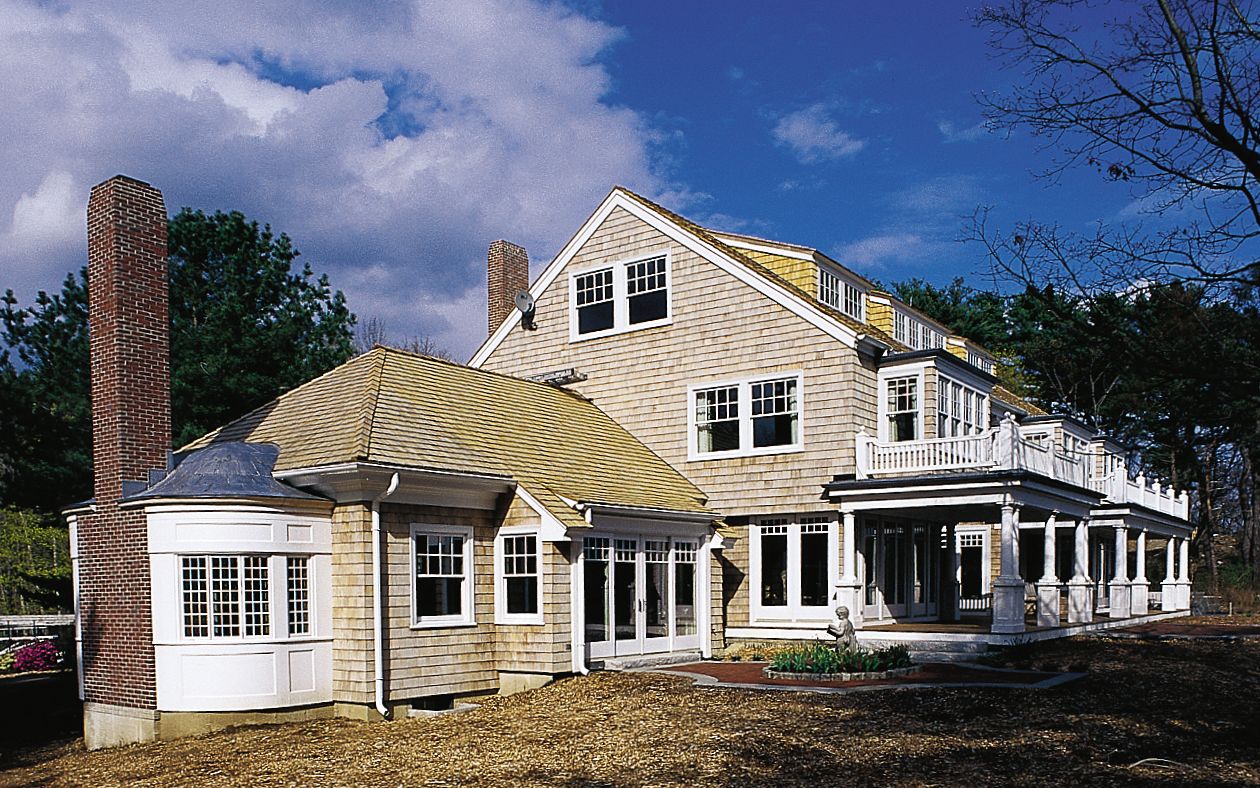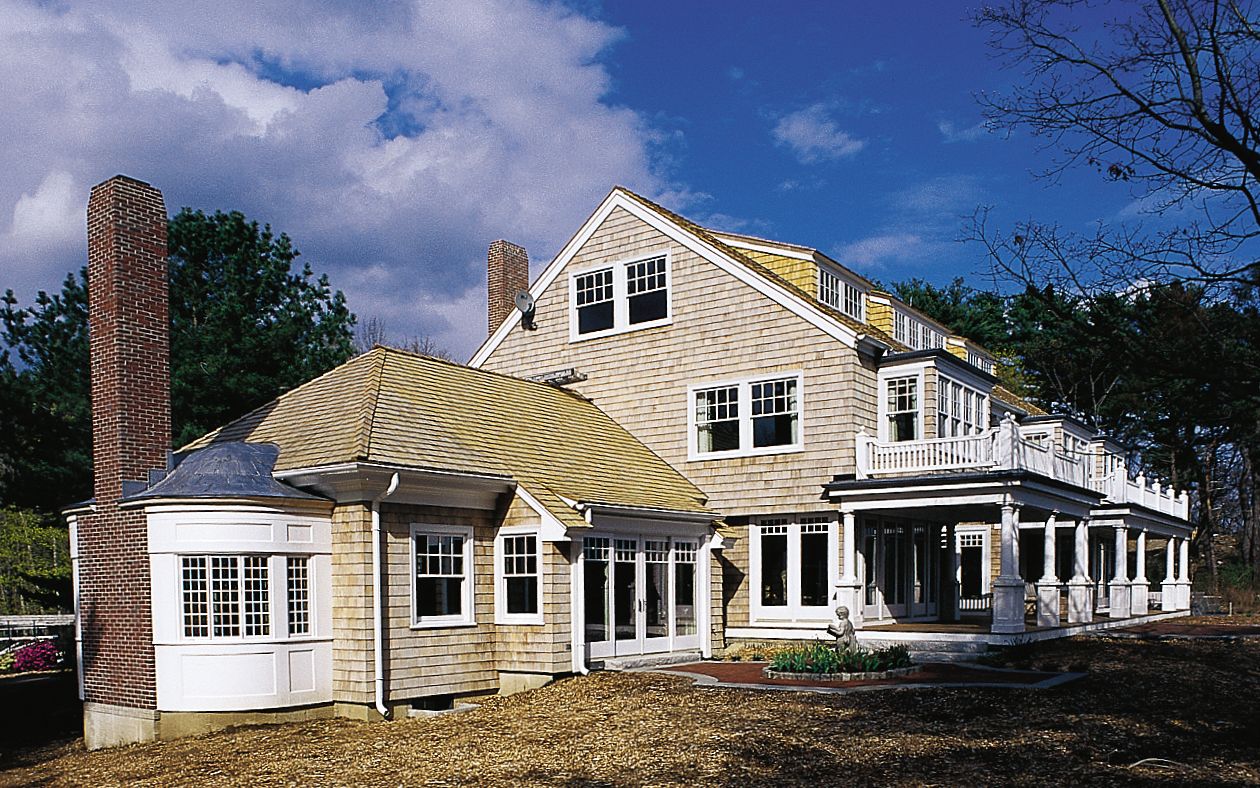
Of all the good reasons to build your house by the seashore, what that
can do to your windows has never been one of them. Traditionally, the
constant bluster and salt spray have shown an equal lack of mercy
towards painted wood and aluminum alike — especially in climates such as the New England coast. So a town with a name like
Manchester-by-the-Sea was probably enough by itself to set any new
windows shivering nervously in their timbers. After all, our project
house had already lost its original wood windows to the elements, and
the aluminum slider units that replaced them were already pitted and corroding after 20 years seaside.
That’s why homeowners David and Janet McCue, in undertaking such a large and costly renovation to their sprawling Shingle-style home hard by the harbor, naturally wanted to make sure they chose their new windows carefully. The challenge at hand was basically twofold. First, since this is a historical restoration, the new windows must preserve the
historical character of the original 1883 house. Second, it’s not enough
just to look good; the new windows also have to perform for a long time
at a high level. That means providing energy-efficiency consonant with
the rest of the building envelope, standing up to seaside conditions
year after year to save the homeowners from the expensive drudgery of continual maintenance. And being as easy as possible to install ialways a welcome bit of good fortune too.
In hopes of meeting all those criteria, the McCues decided to go with a
company specializing in historically appropriate aluminum-clad windows
with a factory-installed finish. The end product is a complete, ready-to-install unit able to provide both the desired look and long-term performance with low maintenance.
So how do they work? The key is the use of extruded aluminum in their
construction. Just as you would expect in a historically accurate window, the interior is solid wood. But the exterior frame and sash are
wood construction that’s been clad in aluminum, and the window casings
are pure extruded aluminum, molded to look just like wooden trim. And it
all comes factory-assembled. For our job, the manufacturer custom-made a trim that closely replicates the original window casings in the original structure, Barn House. The exteriors are finished with a commercial-grade paint that will hold the color and resist the harsh effects of the seaside elements. This pre-applied finish comes with a 20-year manufacturer’s warranty. (And they look so good, in fact, that even Tom Silva says the finished product is virtually indistinguishable from wood.)
Of course, all these benefits do come at a certain price. In a house
project this large, there are inevitable variables, with several different sizes and specifications needed for various windows around the building, though in general, David and Janet were able to use off-the-shelf sizes. Still, at around $940 a unit, their windows cost
about twice the price of more conventional replacement units without all the options.
But taking delivery of a whole house-worth of new windows that are already finished does offer certain benefits. Pre-installed
casing is more immune to water- and air-infiltration than window casing applied on the job site. And, as with painting a room, where a great portion of your care and effort is tied up in doing the trim, so it is
with new windows. Not having to build and paint the entire casing of
every window after installing them saves the contractor a significant
amount of time and labor in the field — which of course translates
to money saved for the homeowner.
On average, each of these new windows has taken Tom Silva about an hour to put in, then it’s finished. By comparison, a window that has no trim would take about 3 hours, plus the cost of the trim, which could be $60 if you used mahogany, the wood that would stand up best near the water. Add to that the cost of a painter priming and finishing all the trim pieces (maybe about 3 hours at $50 an hour). And even then, if you’ve
done it right, you’ll still be facing a repaint in about 7 years. So, all things considered, the “cheaper” windows cost about $350 apiece in
extra labor. Whereas, with this nifty new all-in-one window unit, as Tom
says: “All you do is take it off the truck, carry it over, put it in the wall, plumb it, level it, square it, nail it, and you’re done.”
Perhaps to many ears, still not the simplest-sounding job in the world.
But every little bit helps as Tom and his crew tackle this big old house
by the sea.

